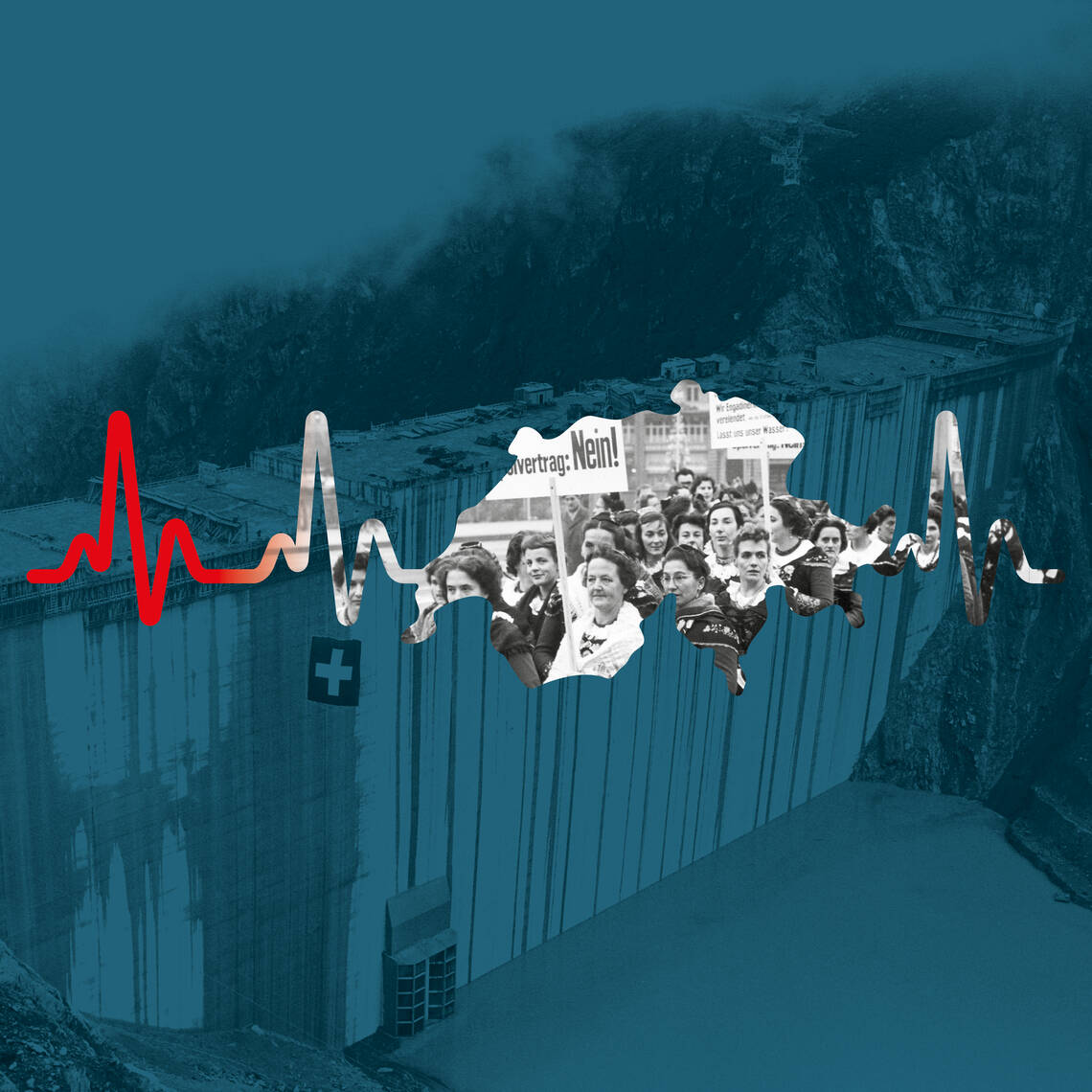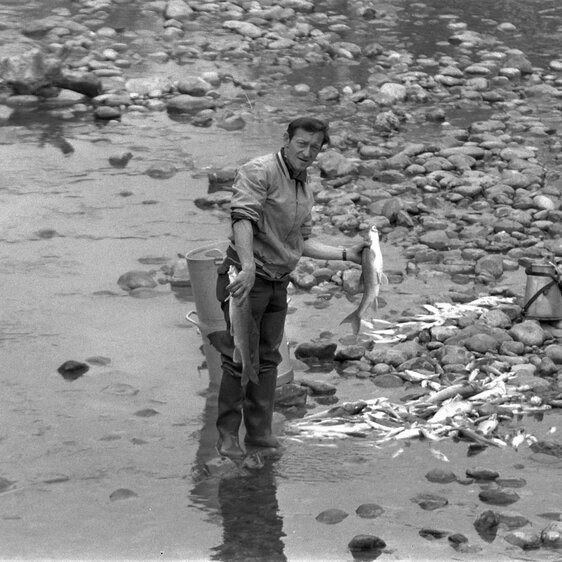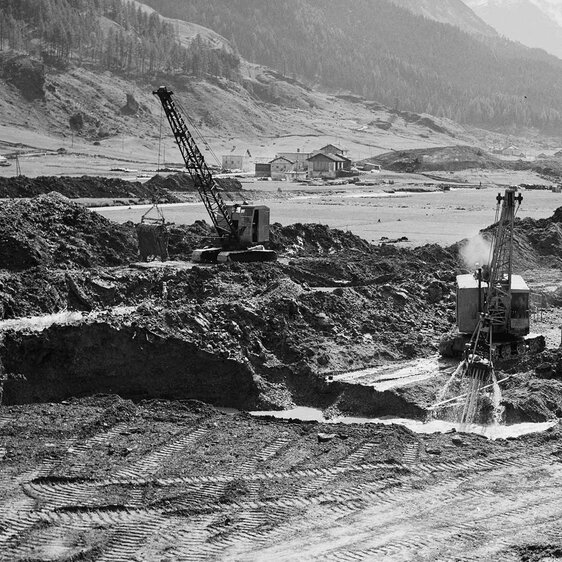National Museum Zurich
| 13.1.2026 - 26.4.2026
The harnessing of hydropower in the Alps bears testament to the ingenuity of Swiss engineering and the success of renewable energy. The building of dams and hydropower plants, however, is also a tale of expulsion, expropriation and resistance. A new video installation features ten contemporary witnesses talking about their personal experiences.
The latest edition of the ‘Experiences of Switzerland’ exhibition series addresses a prominent subject in past and present-day Switzerland: alpine hydropower. The video installation shares the stories of ten contemporary witnesses talking about hydropower from a broad range of perspectives. They cover subjects including personal loss, political struggle, feats of engineering and ecological issues – and by doing so draw attention to a multilayered chapter in Swiss energy history.
Almost 60 per cent of electricity produced in Switzerland comes from hydropower. The dams and power plants, most of which were built after the Second World War, are not just once-in a-generation projects. They are also the driving force behind the economic miracle. The accounts of Amédée Kronig and Eric Wuilloud show the potential of hydropower. Amédée Kronig was director of Grande Dixence SA from 2011 to 2023. The dam constructed from 1951 to 1961 is still the world’s highest gravity dam at 285 metres. Eric Wuilloud managed the pumped-storage power station ‘Nant de Drance’, which is one of the most powerful of its kind in Europe. Wuilloud advocates the responsible use of resources: pumped-storage power stations enable the storage of excess electricity as a reliable, renewable-energy-based supply source in winter.
Resistance to hydropower projects is as old as hydropower itself. It initially took the form of people protesting about losing their homes and since the 1940s it has become more of an environmental movement. Protestors have sought, unsuccessfully in most cases, to oppose the construction of new plants by democratic means. The nationwide environmental movement, which arose in the 1970s, was to protect the Alps. It achieved a notable success in the 1980s, when plans for a reservoir placed the Greina Pass in jeopardy. Gallus Cadonau, CEO of the Greina Foundation, was one of the organisers of that particular protest. He proposed new solutions to preserve the landscape, for example the ‘Landschaftsrappen’, which was basically compensation for the mountain communities in return for foregoing hydropower projects. This gave them an alternative path out of poverty, so they didn’t have to sell authorisation.
The construction work and its inherent dangers also impacted the mountain communities. A disaster in the village of Saas-Almagell in the canton of Valais demonstrates that. Vreni Zengaffinen talks in the video about the catastrophe at the nearby building site for Mattmark reservoir: on 30 August 1965, 88 people were killed when part of the Allalin Glacier broke off and buried the workers’ quarters. Zengaffinen’s father and uncle were among the dead. Italian Armando Lovatel also witnessed the Mattmark catastrophe. He was 16 at the time and working on the building site over the summer to support his family. He saw the disaster up close.
The video installation plus an interactive station providing additional information demonstrate the complexity of hydropower and everything that goes with it. The videos span the divide between then and now, showing how hydropower is not just a technological or environmental issue but also has a social and cultural side. It affects people, villages, landscapes – in the past and present. Whether as a source of hope for a sustainable energy future or a warning about the dangers of interfering with nature, the contemporary witnesses’ voices are an invitation to listen, reflect and discuss.
The video installation is on display from 4 July to 2 November 2025 and from 13 January to 26 April 2026 in the National Museum Zurich.





